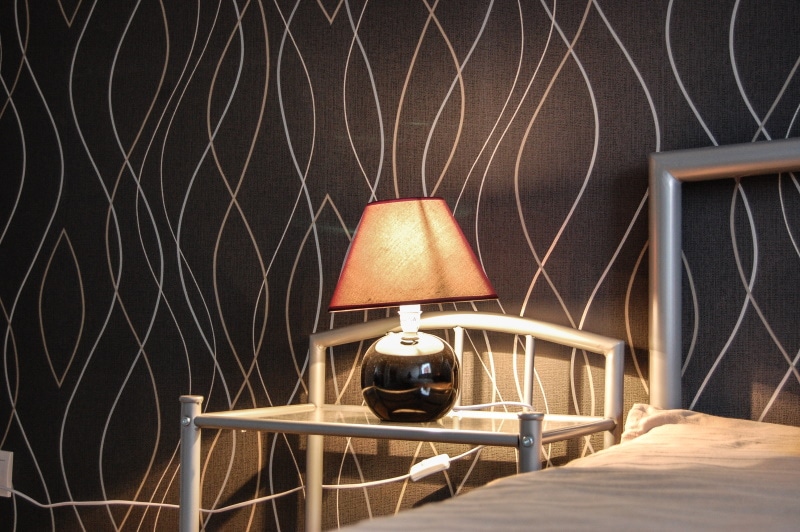How Does a Touch Lamp Work? Types & Mechanics Explained
-
- Last updated:

Touch lamps are remarkable inventions. Using clever electronics, you can turn on a light with the simple touch of a finger. When the lightbulb flares on, it can seem magical if not a little puzzling. How can simply touching a lamp cause it to turn on? How do touch lamps work, exactly? This is an interesting question with an interesting answer. The solution lies in the fact that the human body is buzzing with electrons, heat, water, and electricity. The result is that the human body affects its surroundings in more ways than many people realize.
Here is exactly how touch lamps work and a little bit about the technology behind these clever devices.

How Does It Work?
Touch lamps work by taking inputs from the human body and using those inputs to change the capacitance of the lamp. This change is detected by the circuitry of the lamp, and the light turns on or off accordingly. The human body can add heat, electrons, or resistance to a lamp that will change the internal electronics. This change causes the light to dim, turn on, or turn off.
This is different from a mechanical switch in a number of important ways. Mechanical switches, like a button, light switch, or pull chain, physically change the flow of the circuit by moving a part inside of the lamp or outlet. Touch lamps remove this mechanical switch by allowing the input from the human body to take the place of the physical switch.
Most touch lamps use the property of capacitance to work. (However, there are multiple different ways that touch lamps can work.) On its own, without any input, a lamp has a certain amount of static capacitance. When a person touches a touch lamp, they add electrons to the lamp, which changes its base capacitance. That change is what causes the lamp to change the status of the light.
These principles work by interacting with a component called an oscillator. An oscillator works by detecting these types of electrical changes and switching its position back and forth. The oscillator and the switch work in conjunction to power a touch lamp.

What Is Capacitance?
Capacitance is the ability of something to hold a charge. Humans have a surprisingly high capacitance and give off a lot of electricity. Humans can also conduct electricity. You can see this demonstrated by the human chain experiments that allow someone holding a battery to hold hands with someone holding a lightbulb and illuminating the bulb. Everything has a base level of capacitance. The principle of capacitance is what allows people to transfer some of their energy to the lamp and affect the internal circuitry allowing you to turn on a light with a simple touch.
What Are the Different Types of Touch Lamps?
The vast majority of modern touch lamps use the capacitance method to work. However, there are other types of touch switches that can be used in touch lamps and other touch-sensitive objects as well.
Temperature
One simple way that humans can turn on a touch lamp is by temperature. Human skin is much warmer than most things in the environment. Using temperature, a touch lamp can detect the warmth of a human fingertip and react accordingly by switching its circuit to the on or off position. Cell phones use this principle to some extent which is why touch screens do not work well when you have very cold hands.

Resistance
The human body is made up of water and electricity. This make up allows your fingertip to act as a resistance contact. That means when you put your finger on the physical surface of a touch lamp, the water in your body can conduct a small amount of electricity which bridges the gap in a broken circuit inside the lamp, causing it to turn on with a touch.
Radio Reception
In addition to conducting electricity very well, humans also effectively conduct radio waves. Radio switches are designed to detect the subtle shift in radio waves when humans are around. A small touch by a human finger can change the radio waves inside a lamp and cause the circuits to switch places.
Where Are They Used?
Touch lamps are very popular in bedrooms. The ability to reach over and turn a light on or off with a simple touch is very attractive to people lying in bed. Touch lamps reduce the need to fumble for a pull chain in the dark and eliminate the need to get out of bed to turn the light off. Touch lamps are primarily used in residential spaces, but they can conceivably be used anywhere. Bedrooms, libraries, dens, and offices are the most common places to find touch lamps in action.

Advantages of Touch Lamps
Touch lamps have one big advantage. They turn on very easily. You don’t need to fiddle with switches, chains, or buttons. You just need to make contact with the base of the lamp to turn it on or off. Many touch lamps are also dimmable or have multiple lighting settings, which is ideal for a bedroom or as a reading light. Touch lamps strive to make people’s lives easier by reducing the need to walk over to a light switch.
Disadvantages of Touch Lamps
Touch lamps have some downsides over traditional lamps. They are often more expensive than a basic bedside lamp. They can require special light bulbs that have different lighting levels or dimming capacities. Touch lamps can also be more difficult to fix if something goes wrong since the components are more complicated than a simple mechanical switch. All of that adds up to enhanced costs and complexities that can be frustrating if something goes wrong.
Frequently Asked Questions (FAQs)
Are All Touch Lamps Dimmable?
No. Many touch lamps are dimmable, but not all of them are. Some touch lamps have a simple on-off function. Other touch lamps have multiple brightness levels. That means you have to tap the base multiple times to cycle through dim, normal, and bright lights before turning it off again.

Do Touch Lamps Require Special Bulbs?
Sometimes. Touch lamps with dimming abilities or multiple light levels will often require a dimmable light bulb. Dimmable bulbs are special and are designed to work in lamps with dimmers installed. You should not install a non-dimmable light bulb into a dimmable lamp. The circuitry is different in a dimmable lamp than in a standard lamp, and the wrong bulb can cause shorts and other issues. Check your lamp to see if it requires a special lightbulb. The lamp should have readable information about the size and type of lightbulb that is ideal for its design.
When Was the Touch Lamp Invented?
The first patent for a residential touch lamp was filed in 1954. The original touch lamps were called “Aladdin Lamps” and were created by Aladdin Industries. The first models became available in 1955, but they were inefficient and expensive. Aladdin Lamps didn’t catch on in the 1950s as Aladdin Industries hoped. They were more of a novelty. Touch lamps didn’t become more affordable and widespread until the 1980s. The newer model of touch lamps replaced fragile, expensive vacuum tubes with integrated circuits, which helped them function better.

Conclusion
Touch lamps are a great example of an interesting modern product. Using oscillators and sensitive electronic switches, people can turn their lights on and off with the touch of a finger. This technology is relatively new and far more complicated than most people realize. While it might feel like a novelty to turn a lamp on with a touch, it is actually the work of a series of complex circuits that are designed to change when they come in contact with the human body.
Featured Image Credit: Tobias Kraus, Shutterstock
Contents

